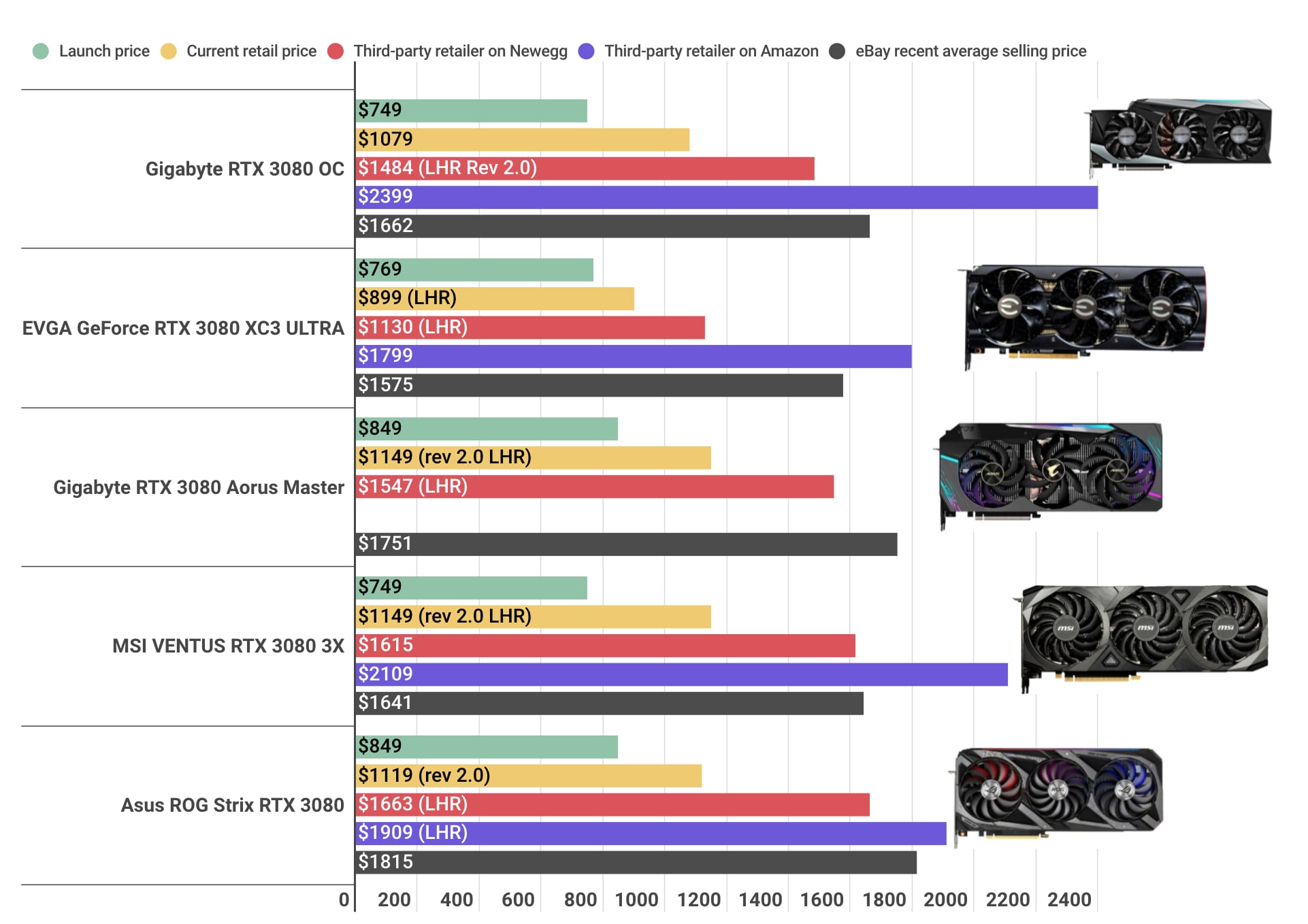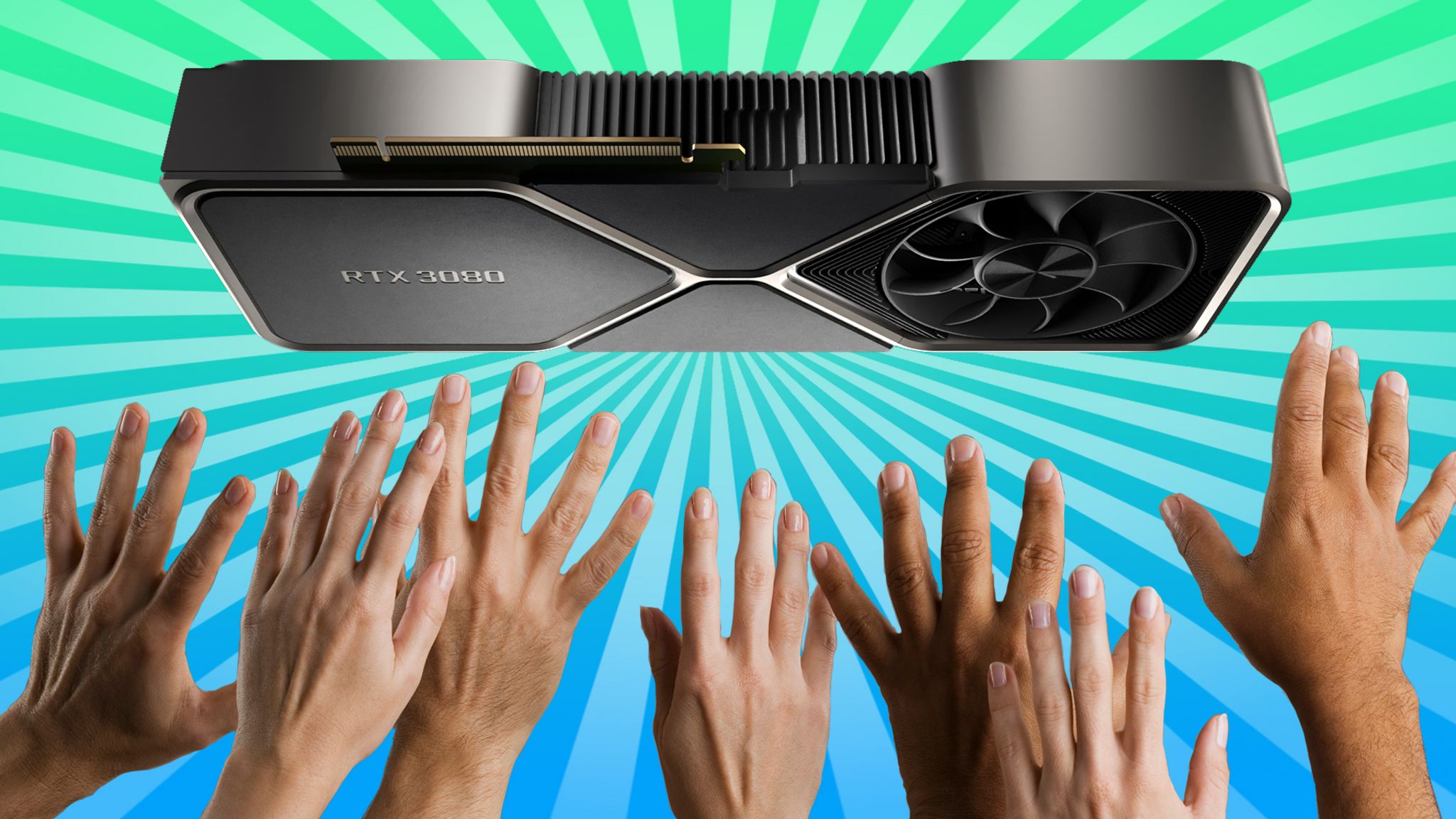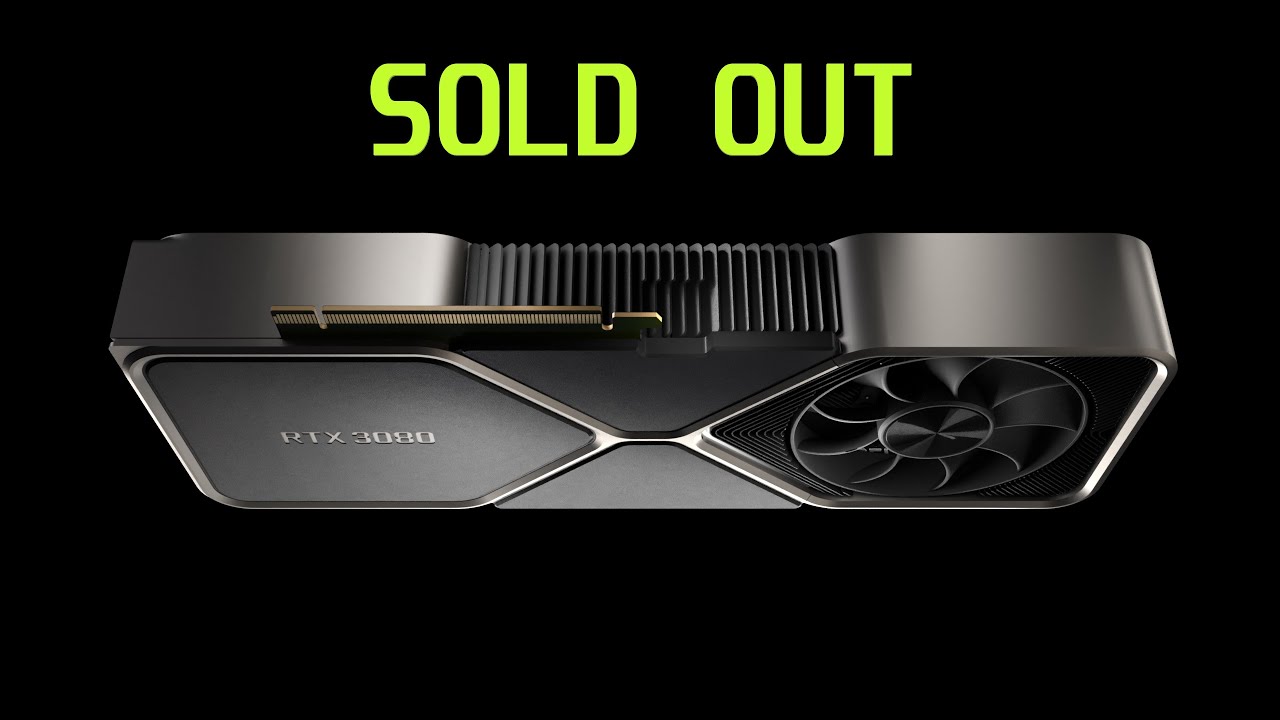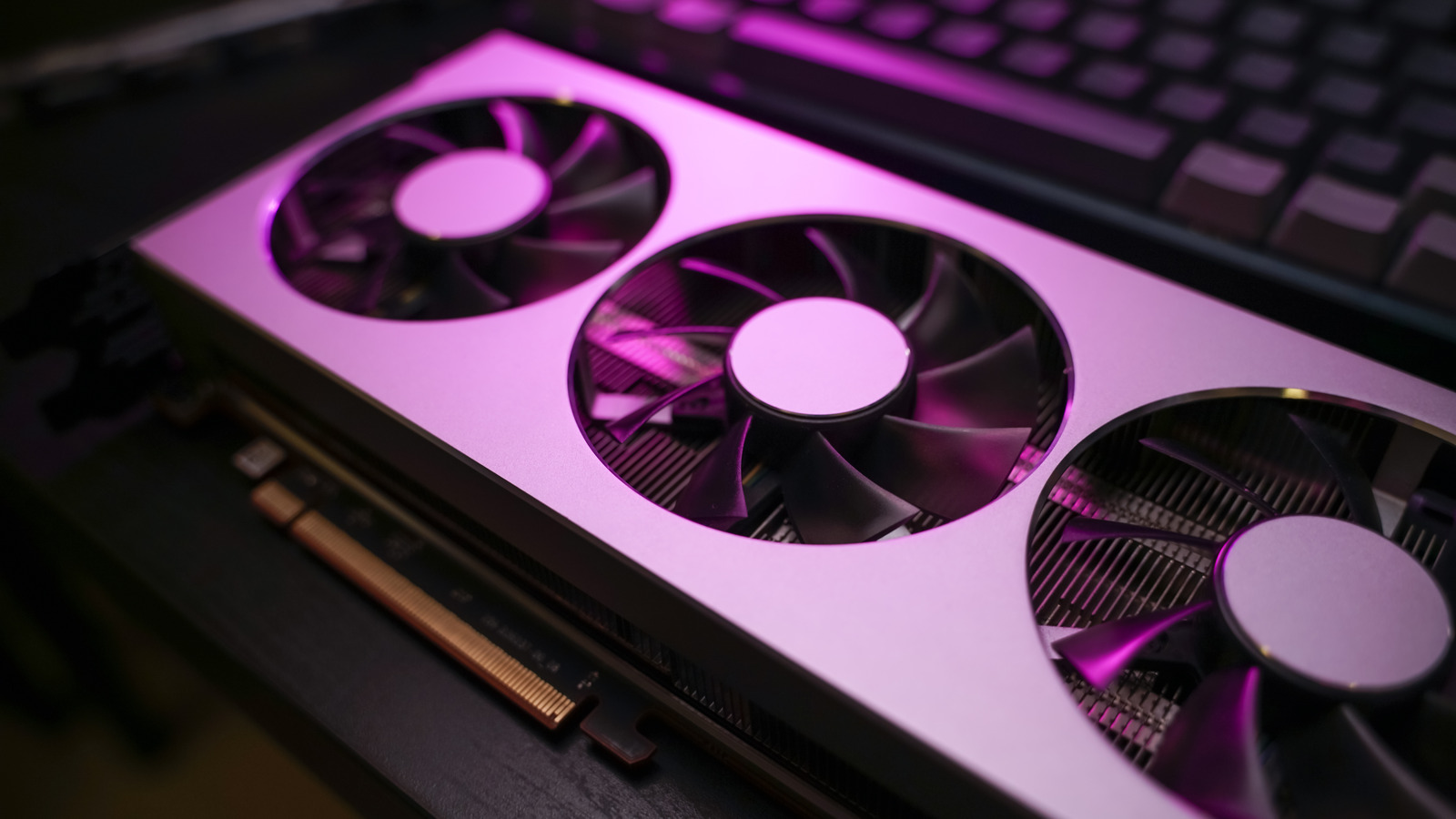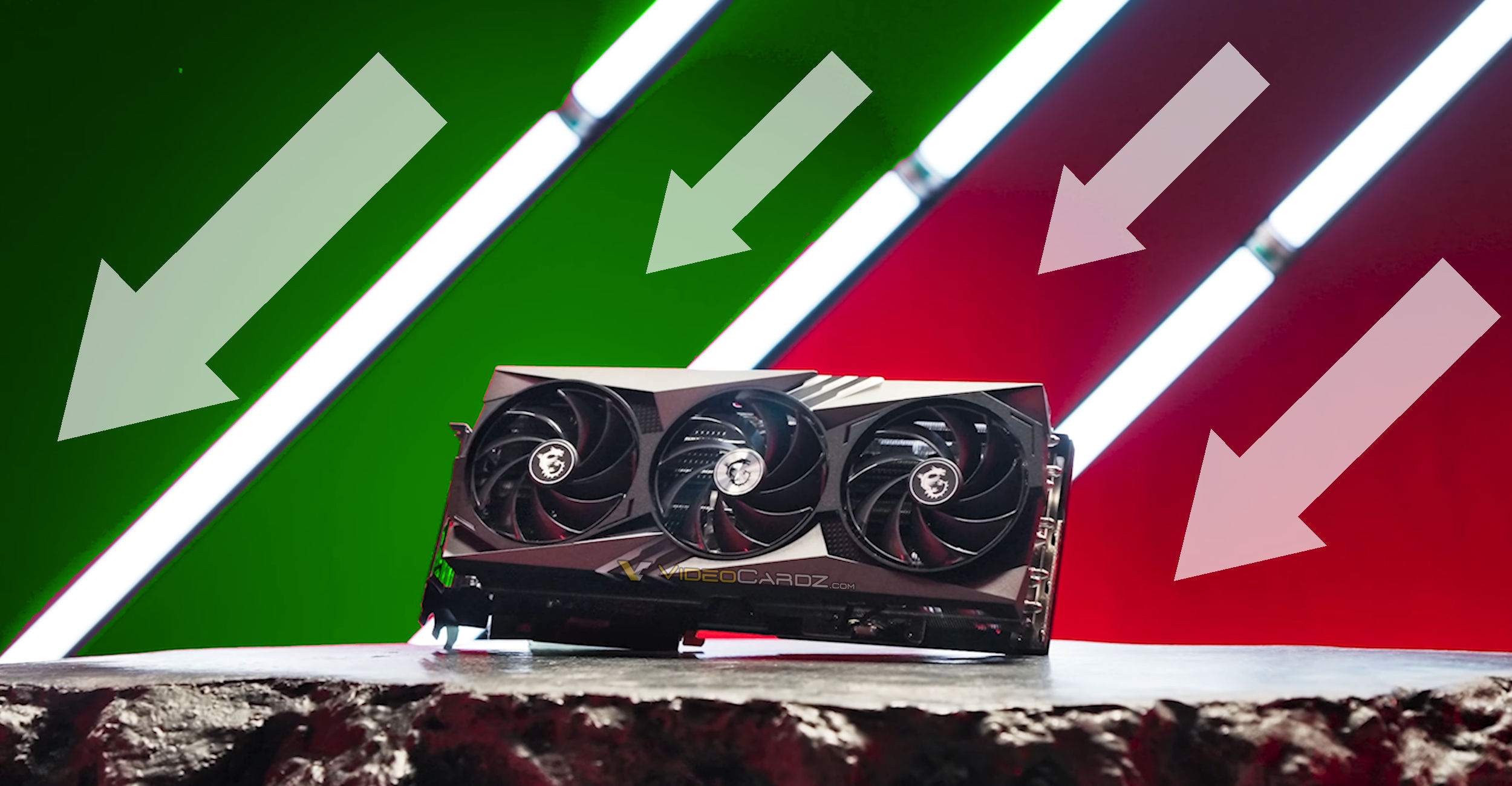Introduction
Over the past few years, graphics card prices have skyrocketed, much to the dismay of gamers, tech enthusiasts, and PC builders. What was once an affordable and essential component for gaming rigs has become an expensive commodity that is increasingly out of reach for many. The sudden surge in prices has left everyone questioning the reasons behind this unsettling trend.
This article aims to delve into the factors contributing to the unprecedented increase in graphics card prices. It will explore the rising demand for these components, the influence of cryptocurrency mining, supply shortages, the impact of the COVID-19 pandemic, scalping and reselling practices, tariffs and trade wars, component shortages, and the effect of advanced technology and production costs.
By understanding these factors, we can gain valuable insight into why graphics card prices have reached such exorbitant heights. So, let’s venture into the world of computer hardware and unveil the intricacies behind this ongoing phenomenon.
Increased Demand
One of the key factors driving the surge in graphics card prices is the ever-increasing demand for these components. The demand has been fueled by several factors, including the rise of gaming as a popular form of entertainment and the emergence of new technologies such as virtual reality (VR) and augmented reality (AR).
Gaming has witnessed exponential growth in recent years, with millions of players worldwide. As games become more visually stunning and technologically advanced, the demand for high-performance graphics cards to deliver smooth gameplay and immerse players in realistic virtual worlds has soared.
Moreover, the proliferation of eSports and competitive gaming has attracted a massive following, with professional gamers and enthusiasts constantly seeking the latest and most powerful graphics cards to gain a competitive edge. This has created a culture of enthusiasts who are willing to pay a premium to stay at the forefront of gaming technology.
Additionally, the widespread adoption of VR and AR technologies has further driven the demand for graphics cards. These immersive experiences require significant computational power to render realistic visuals and provide seamless interactions. As VR and AR applications continue to expand, so does the need for more powerful and capable graphics cards.
Furthermore, the COVID-19 pandemic has contributed to the increased demand for graphics cards. With lockdowns and restrictions forcing many individuals to work and study remotely, there has been a surge in demand for home entertainment and gaming setups. People are investing in high-performance graphics cards to enhance their gaming experience or join virtual meetings and conferences seamlessly.
As the demand for graphics cards continues to rise, manufacturers have struggled to keep up with the market’s needs, leading to supply shortages and subsequent price hikes. The next section will explore the impact of cryptocurrency mining on graphics card prices, shedding light on another influential factor.
Cryptocurrency Mining
The boom in cryptocurrency mining has played a significant role in the skyrocketing graphics card prices. Cryptocurrencies such as Bitcoin and Ethereum rely on complex mathematical calculations performed by powerful GPUs (graphics processing units) for mining new coins and verifying transactions.
As the value of cryptocurrencies soared in recent years, many individuals and organizations turned to mining as a lucrative endeavor. This surge in mining activity created a surge in the demand for graphics cards, as they are highly efficient at performing the repetitive calculations required for mining.
The high demand from cryptocurrency miners has resulted in a shortage of graphics cards, creating a supply-demand imbalance. Mining enthusiasts often purchase multiple graphics cards to build powerful mining rigs, further exacerbating the scarcity and driving up prices.
In addition to the demand, the specialized settings required for mining have affected the availability and affordability of graphics cards for regular consumers. Mining rigs are typically designed to operate at maximum efficiency, which means running GPUs at high temperatures for extended periods. This results in faster wear and tear on the components, reducing their lifespan and making them less suitable for regular gaming or computing purposes.
Furthermore, cryptocurrency mining is a power-intensive process that requires a significant amount of electricity. As a result, many miners have flocked to regions with low electricity costs, creating additional pressure on the availability and pricing of graphics cards in those areas.
While the popularity of certain cryptocurrencies can fluctuate over time, the impact of mining on graphics card prices can be considerable, as mining remains a profitable venture for many. This has led to a competitive environment where graphics cards are in high demand and difficult to obtain at reasonable prices.
The combination of increased demand from both gamers and cryptocurrency miners has contributed to the steep increase in graphics card prices. However, it is important to note that cryptocurrency mining is just one piece of the puzzle, and other factors such as supply shortages and scalping practices also play a significant role. These factors will be explored in the subsequent sections.
Supply Shortage
Another major factor contributing to the skyrocketing graphics card prices is the persistent supply shortage. The demand for graphics cards has outpaced the supply, resulting in limited availability and inflated prices.
There are several reasons for the supply shortage. Firstly, the global semiconductor industry has faced challenges in meeting the growing demand for electronic components, including graphics cards. Factors such as disruptions caused by the COVID-19 pandemic, trade restrictions, and factory closures have disrupted supply chains and manufacturing processes.
The pandemic has caused factory shutdowns and delays in production, leading to a shortage of critical components like memory chips and semiconductors. These shortages have a ripple effect throughout the industry, affecting the availability of graphics cards as well.
Moreover, the increasing complexity and sophistication of graphics cards have made their production more challenging. Advanced manufacturing processes and the use of high-quality components have contributed to longer production cycles and reduced yields. This, in turn, has led to a lower supply of graphics cards reaching the market.
Another factor in the supply shortage is the intense competition for resources among different industries. The demand for semiconductors and electronic components has surged in various sectors such as automotive, consumer electronics, and telecommunications. As a result, manufacturers have had to allocate their limited supplies to these industries, leaving fewer resources available for producing graphics cards.
Furthermore, the distribution of graphics cards has been affected by scalping and reselling practices. Scalpers and bots often exploit online purchasing systems to purchase large quantities of graphics cards in order to resell them at inflated prices. This not only reduces the availability of graphics cards for regular consumers but also contributes to the perception of a supply shortage.
In summary, the supply shortage of graphics cards is a result of a combination of factors, including disruptions caused by the COVID-19 pandemic, manufacturing challenges, intense competition for resources, and scalping practices. These factors have created a scarcity of graphics cards in the market, contributing to the sharp rise in prices.
COVID-19 Pandemic
The COVID-19 pandemic has had a significant impact on various industries worldwide, and the computer hardware industry, including graphics card production and availability, has not been spared from its effects.
Firstly, the pandemic caused disruptions in global supply chains and manufacturing operations. Lockdown measures, travel restrictions, and temporary closures of factories and warehouses led to delays in production and distribution of electronic components, including graphics cards. The reduced capacity and logistical challenges resulted in a slower supply chain and limited availability of graphics cards in the market.
Moreover, the increased demand for home entertainment and gaming during lockdowns and social distancing measures has fueled the need for high-performance graphics cards. With people spending more time indoors, there has been a surge in the purchase of gaming rigs and computer peripherals, including graphics cards, to enhance the gaming experience or support remote work and learning.
This sudden spike in demand, coupled with the supply chain disruptions caused by the pandemic, led to a supply-demand imbalance and contributed to the shortage of graphics cards and subsequent price increases.
Additionally, the pandemic has shifted consumer spending patterns. With travel, entertainment, and other leisure activities restricted, many individuals have redirected their discretionary income towards upgrading their home setups. This boost in consumer spending on computer hardware further amplified the demand for graphics cards, putting additional strain on the already limited supply.
Furthermore, the ongoing pandemic has disrupted the production and launch of new graphics card models. Manufacturers faced challenges in engineering, testing, and marketing their latest products due to restrictions on gatherings, reduced staffing, and delays in development cycles. This has further impacted the availability of new graphics cards in the market, leading to a greater reliance on older models and higher prices.
In summary, the COVID-19 pandemic has caused disruptions in the global supply chain, increased demand for home entertainment and gaming setups, shifted consumer spending patterns, and hampered the production and release of new graphics card models. Combined, these factors have played a significant role in the scarcity and price surge of graphics cards.
Scalping and Reselling
Another factor adding to the inflated prices of graphics cards is the prevalence of scalping and reselling practices. Scalpers, often using automated bots, exploit online purchasing systems to buy large quantities of graphics cards with the intention of reselling them at significantly higher prices.
Scalping has become increasingly common due to the high demand and limited availability of graphics cards. Scalpers take advantage of the scarcity by purchasing as many units as possible as soon as they become available, leaving regular consumers with little to no chance of acquiring the desired graphics card at its original retail price.
The scalpers then list the graphics cards on online marketplaces or auction sites at highly inflated prices, sometimes even multiple times the original retail price. This forces consumers who are desperate to obtain a graphics card to pay exorbitant amounts or turn to the resale market.
The use of automated bots provides scalpers with an unfair advantage as they can make purchases faster than human buyers. These bots can quickly scan multiple websites, add the desired graphics cards to the cart, and complete the purchase in a matter of seconds. This makes it nearly impossible for regular consumers to compete and purchase graphics cards at their intended price.
Scalping not only drives up prices but also creates frustration and resentment among consumers who find themselves unable to secure a graphics card at a reasonable cost. This situation not only impacts individual consumers but also affects retailers who might struggle to meet customer demand while dealing with the negative reputation associated with inflated prices.
Attempts to combat scalping have been made by implementing measures such as purchase limits, captcha systems, and manual verification processes. However, determined scalpers often find ways to bypass these measures, making it an ongoing challenge.
In summary, the practice of scalping, fueled by the high demand and limited availability of graphics cards, has contributed to the soaring prices of these components. It has created an unfair marketplace where scalpers profit by reselling at significantly higher prices, leaving regular consumers frustrated and struggling to acquire graphics cards at reasonable costs.
Tariffs and Trade Wars
Tariffs and trade wars between countries have also had an impact on the pricing of graphics cards. These actions and policies can affect the cost of importing or exporting electronic components, including graphics cards, leading to increased prices for consumers.
When tariffs are imposed on a particular product, such as graphics cards, it means that the cost of importing those components becomes higher. This cost is often passed on to the consumer in the form of increased prices to offset the additional expenses incurred by manufacturers or retailers.
Trade wars, which involve the imposition of tariffs and trade restrictions in response to economic disputes between countries, can worsen the situation. When countries engage in trade disputes and impose retaliatory measures, it disrupts the flow of goods and can lead to higher costs and reduced availability of products, including graphics cards.
In recent years, there have been trade tensions between major economic powers, such as the United States and China. These tensions have resulted in the imposition of tariffs on various imported products, including electronic components. Graphics cards, often manufactured in countries like China, may face higher tariffs, impacting their final price when sold in countries affected by these trade measures.
The additional costs incurred due to tariffs and trade wars can be passed on to consumers either by raising the prices of the graphics cards directly or by reducing profit margins for manufacturers and retailers. In either case, it leads to higher prices for consumers.
Moreover, trade restrictions and uncertainties caused by trade wars can disrupt supply chains and impact the availability of graphics cards. Manufacturers may face challenges in sourcing necessary components or face delays in shipments due to trade-related regulations, further contributing to the scarcity of graphics cards in the market.
Although the impact of tariffs and trade wars on graphics card prices may vary depending on the specific trade policies and countries involved, they remain an important factor to consider when examining the reasons for the excessive prices of graphics cards.
Component Shortages
Another factor contributing to the skyrocketing prices of graphics cards is the shortage of key components required in their manufacturing. The scarcity of these components has disrupted the production and availability of graphics cards, leading to increased prices.
One of the critical components experiencing shortages is the memory chips, such as GDDR6 memory, used in graphics cards. These high-speed memory chips are essential for processing and storing data, allowing for smooth and efficient performance. However, limited supply and high demand for memory chips have resulted in increased costs, which are ultimately passed on to consumers.
In addition to memory chips, other vital components like semiconductors and power delivery systems are also experiencing shortages. The demand for these components has surged not only in the computer hardware industry but also in various other sectors such as automotive and consumer electronics. Manufacturers are facing difficulties in sourcing an adequate supply of components, given the increased competition and supply chain disruptions.
The shortage of components has been exacerbated by factors such as factory shutdowns, logistical challenges, and increased demand due to the pandemic. The closure of factories or reduced manufacturing capacity during lockdowns and social distancing measures has disrupted the production of components, leading to supply constraints.
Furthermore, the rapid advancement of technology in the graphics card industry has increased the complexity of components, making their production more challenging. Advanced components often require more refined manufacturing processes, intricate designs, and higher quality materials, which can contribute to longer lead times and reduced yields.
As a result of the component shortages, manufacturers have struggled to meet the demand for graphics cards, leading to limited availability and increased prices in the market. The scarcity of components not only impacts newly released graphics cards but can also affect older models, as manufacturers may allocate their limited supplies to the production of the latest and more profitable models.
Overall, the shortage of critical components, such as memory chips and semiconductors, has disrupted the production and availability of graphics cards, contributing to the surge in prices. The impact of component shortages on the graphics card market emphasizes the intricate nature of the global supply chain and the challenges faced by manufacturers in meeting consumer demand.
Advanced Technology and Production Costs
The continuous advancement of technology in the graphics card industry has led to higher production costs, which contribute to the increased prices of these components. The integration of cutting-edge features and the use of advanced manufacturing processes have significantly raised the overall cost of producing graphics cards.
As new technologies emerge, graphics card manufacturers strive to incorporate these innovations into their products to provide better performance and enhanced features. These advancements include improvements in graphical processing units (GPUs), increased memory capacity and bandwidth, and the integration of real-time ray tracing and artificial intelligence capabilities.
However, the inclusion of these advanced features comes at a price. The development and production of new technologies require significant investment in research and development, as well as the acquisition of patents and licenses. These costs are passed on to consumers, resulting in higher prices for graphics cards.
Furthermore, the use of advanced manufacturing processes, such as nanometer-scale fabrication techniques, also adds to the production costs. These processes involve more complex and precise methods of manufacturing, which require specialized equipment and highly skilled labor. As a result, the production costs for graphics cards increase significantly.
Additionally, the use of high-quality materials, such as top-tier memory chips and robust cooling systems, further adds to the expenses. The demand for these premium components often outpaces supply, leading to higher costs for manufacturers.
The constant push for innovation and the incorporation of advanced technology also necessitates higher levels of quality assurance and testing. Rigorous quality control procedures, including extensive testing and validation, add to the overall production costs of graphics cards.
As a result of these factors, the production costs for graphics cards have risen, and manufacturers need to price their products accordingly to cover these expenses and maintain profitability. This, in turn, contributes to the increased prices that consumers encounter in the market.
While the advancements in technology bring benefits in terms of enhanced performance and features, they also come with a higher price tag due to the rising production costs. As the industry continues to innovate and invest in cutting-edge technologies, the prices of graphics cards are likely to continue reflecting the increased expenses associated with advanced technology and manufacturing processes.
Conclusion
The surge in graphics card prices can be attributed to various interconnected factors. The increased demand for graphics cards, driven by the rise of gaming, the adoption of virtual reality and augmented reality technologies, and the impact of the COVID-19 pandemic, has strained the supply chain and led to shortages. Cryptocurrency mining has further contributed to the scarcity and inflated prices, as miners vie for high-performance GPUs.
In addition to the demand-side factors, supply shortages resulting from disruptions caused by the COVID-19 pandemic, manufacturing challenges, and the intense competition for resources have added to the difficulties in obtaining graphics cards at reasonable prices. Scalping and reselling practices have further distorted the market, with scalpers exploiting the limited availability of graphics cards to sell at inflated prices.
Factors such as tariffs and trade wars have also played a role, influencing the import and export costs of graphics cards. The shortage of critical components, such as memory chips and semiconductors, has impacted production and led to increased prices. Lastly, the integration of advanced technology and the rising production costs associated with it have contributed to the inflated prices of graphics cards.
As long as these factors persist and interact with one another, the prices of graphics cards are likely to remain high. Manufacturers, retailers, and consumers must navigate through the challenges posed by these factors, with hopes for improved supply, better availability, and fairer pricing in the future.







